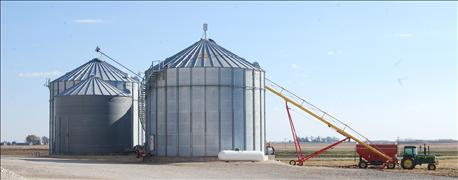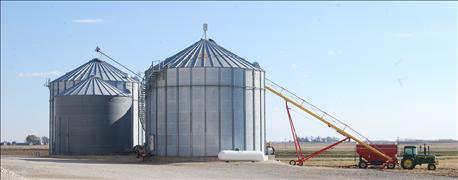November 17, 2016

The Iowa Commodity Challenge, a website developed by ISU Extension and Outreach and the Iowa Farm Bureau, reflects real world markets so users can explore how various tools work without putting money on the table.

SHARPEN YOUR MARKETING: The Iowa Commodity Challenge is free to anyone who wants to participate. The online game helps you learn how various marketing tools work without using real bushels and real money.
The site contains 14 instructional videos explaining various aspects of marketing, including three new videos: Successful Market Planning, Using Crop Contracts and Working with Your Grain Merchandiser. Also included is an updated 65-page Marketing Tools Workbook and a variety of learning activities. Participants can also choose to participate in an online grain market simulation game to help improve marketing skills. The game includes using futures and ag options as marketing tools, and participation can also help users improve strategies to sell cash corn and soybeans.
Online game lets you try out marketing strategies and tools
“It gives players a chance to look at commodity markets and how they work over the course of several months,” said Steve Johnson, Extension farm management specialist with Iowa State University. “This game reflects what is going on in the real-world markets so participants are able to try out some marketing strategies in a setting where they can explore how our tools work.”
As a part of the online grain market simulation game; participants are given 75,000 bushels of corn and 25,000 bushels of soybeans stored commercially to market before spring using March 2017 corn and soybean futures. Storage costs will accrue on bushels as if they were in the bin (6 cents per bushel per month).
The Iowa Commodity Challenge webpage can be accessed at extension.iastate.edu/agdm/info/icc.html. What you learn can help you market this fall’s big crop.
Tight storage and extra bushels add pressure to crop prices
The big crops and overflowing bins have created a situation that is, at least temporarily, depressing cash prices farmers can earn for the bushels they harvested this fall. “All of those bushels are flowing into bins, bunkers and sometimes bags as elevators look for places to store this crop,” says ISU Extension farm management specialist Steve Johnson. “And most of those bushels will continue to adversely affect the corn and soybean basis.”
Basis is the difference between the nearby futures contract price on the Chicago Mercantile Exchange and the local cash price being offered for corn and soybeans at elevators, processors and other grain buyers. That difference has been unusually wide this harvest season for both corn and beans.
Develop a marketing strategy for your unpriced bushels
Recently, the average Iowa corn basis was 45 to 60 cents per bushel under futures at many elevators, with the average Iowa soybean basis running 70 to 90 cents under the nearby futures contract.
The additional bushels from strong yields will help farmers lower their breakeven costs and potentially increase gross crop revenue, says Johnson. But most of those additional bushels are being affected by the wider basis.
Monitor your local basis pattern now for marketing clues
With record production, many of these extra bushels probably didn’t get marketed in the spring to take advantage of the much higher futures prices offered. Farmers should monitor their local situation as well as their own farm inventory and cash flow needs, says Ed Kordick, commodity services manager for Iowa Farm Bureau. For example, in areas of the state with corn piled at elevators the pressure on local basis could continue.
Hopefully, the basis pattern will begin to narrow into December, as it usually does. As bushels get locked away in storage, the elevators and processors narrow the basis to provide an incentive for farmers to sell bushels. “Farmers should monitor their local basis to see if they should continue to store or price some of these bushels on this potentially stronger basis toward the end of the year,” says Kordick.
Be aware of costs of owning grain: storage and interest charges
In addition, farmers need to pay attention to the costs of ownership, which includes both storage and interest charges. “These mounting costs can eat up much of the potential of improved cash prices offered,” he notes.
It’s important for farmers to have an overall marketing strategy for unpriced corn and soybeans so they can capitalize on opportunities. Storing bushels and hoping for better prices could prove challenging in this type of market with burdensome ending stocks forecast for next August 31, the end of the current marketing year.
Kordick adds, “In difficult times with such tight profit margins or even no profit margins in some cases, having a marketing plan with price and/or basis goals along with the time objectives can be the difference between taking action or being tossed about by market volatility.”
You May Also Like




